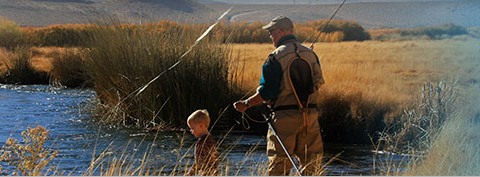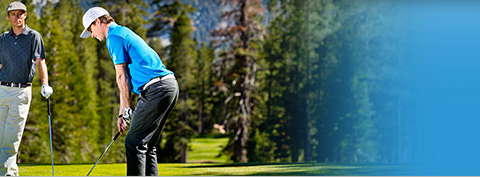Arthritis
The term arthritis literally means inflammation of a joint, but is generally used to describe any condition in which there is damage to the cartilage. Inflammation is the body's natural response to injury. The warning signs that inflammation presents are redness, swelling, heat and pain.
The cartilage is a padding that absorbs stress. The proportion of cartilage damage and synovial inflammation varies with the type and stage of arthritis. Usually the pain early on is due to inflammation. In the later stages, when the cartilage is worn away, most of the pain comes from the mechanical friction of raw bones rubbing on each other.
There are over 100 different types of rheumatic diseases. The most common are:
Osteoarthritis: Osteoarthritis is also called degenerative joint disease; this is the most common type of arthritis, which occurs often in older people. This disease affects cartilage, the tissue that cushions and protects the ends of bones in a joint. With osteoarthritis, the cartilage starts to wear away over time. In extreme cases, the cartilage can completely wear away, leaving nothing to protect the bones in a joint, causing bone-on-bone contact. Bones may also bulge, or stick out at the end of a joint, forming a bone spur.
Osteoarthritis causes joint pain and can limit a person's normal range of motion (the ability to freely move and bend a joint). When severe, the joint may lose all movement, causing a person to become disabled. Disability most often happens when the disease affects the spine, knees, and hips
Rheumatoid Arthritis: This is an auto-immune disease in which the body's immune system (the body's way of fighting infection) attacks healthy joints, tissues, and organs. Occurring most often in women of childbearing age (15-44), this disease inflames the lining (or synovium) of joints. It can cause pain, stiffness, swelling, and loss of function in joints. When severe, rheumatoid arthritis can deform, or change, a joint. For example, the joints in a person's finger can become deformed, causing the finger to bend or curve.
Rheumatoid Arthritis can effect any joint but it tends to focus on the hands and feet and tends to be symmetrical. About two to three times as many women as men have this disease.
Post-traumatic arthritis: Arthritis following a severe injury to a joint is calledpost-traumatic arthritis. This condition may develop years after trauma such as a fracture, severe sprain, or ligament tears. Sometimes it can occur much quicker
Psoriatic arthritis: This form of arthritis occurs in some people with psoriasis, a scaling skin disorder.It can effect any joint but it tends to focus on the joints at the ends of the fingers and toes. It can also cause changes in the fingernails and toenails. Back pain may occur if the spine is involved.
Causes of arthritis
Osteoarthritis is caused by the wearing out of the cartilage covering the bone ends in a joint. This may be due to excessive strain over prolonged periods of time, or due to other joint diseases, injury or deformity. It is thought that the underlying cause is likely genetic, but the exact genetic markers for predicting osteoarthritis are unknown. Primary osteoarthritis is commonly associated with ageing and general degeneration of joints.
Secondary osteoarthritis is generally the consequence of another disease or condition, such as repeated trauma or surgery to the affected joint, or abnormal joint structures from birth.
Rheumatoid arthritis is often caused when the genes responsible for the disease are triggered by infection or any environmental factors. With this trigger the body may produce antibodies against the joint, leading to rheumatoid arthritis.
Fractures at joint surfaces and joint dislocations may predispose an individual to develop post-traumatic arthritis. It is thought that the initial impact of the trauma to the cartilage sets off a biologic chain of events in which the cartilage cells ultimately die.
Uric acid crystal build-up is the cause of gout and long-term crystal build-up in the joints may also cause arthritis.
Symptoms of arthritis
There are more than 150 different forms of arthritis. Symptoms vary according to the form of arthritis. Each form affects the body differently. Arthritic symptoms generally include swelling and pain or tenderness in one or more joints for more than two weeks, redness or heat in a joint, limitation of motion of joint, early morning stiffness, and skin changes including rashes.
Diagnosis
Doctors diagnose arthritis with a medical history, physical exam and X-rays of the affected part. Computed tomography (CT) scans and magnetic resonance imaging (MRI) scans are also sometimes performed to diagnose arthritis.
Treatment Options
There is no cure for arthritis. Your doctor may prescribe anti-inflammatory medicine. They may recommend occupational therapy or physiotherapy, which includes exercises and heat treatment. In severe cases, surgery may be suggested. The type of surgery will depend on your age and severity of the disease. Initial treatment for arthritis is conservative, consisting of rest, avoidance of vigorous weight bearing activities, and the use of non-narcotic analgesic and/or anti-inflammatory medications. With worsening symptoms braces may be helpful. For more severe symptoms, an injection of cortisone into the joint is frequently advised and can be quite helpful. Alternative injections include viscosupplementation (an anti-inflammatory joint lubricant) and platelet rich plasma. When conservative measures have been exhausted, offer no relief, and the symptoms have become disabling, surgery may be recommended. There are different surgical procedures that can be used and may include:
Synovectomy: This surgery is usually indicated for early cases of inflammatory arthritis where there is significant swelling (synovitis) that is causing pain or is limiting the range of motion. Synovectomy is a surgical removal of the inflamed synovium (tissue lining the joint). The procedure may be performed using arthroscopy.
Arthroplasty: In this procedure, your surgeon removes the affected joint and replaces it with an artificial implant. It is usually performed when the joint is severely damaged by osteoarthritis, rheumatoid arthritis, post-traumatic arthritis or avascular necrosis. The goal of the surgery is to relieve pain and restore the normal functioning of the joint.
Arthrodesis: A fusion, also called an arthrodesis, involves removal of the joints and fusing the bones of the joint together using plates or screws. This surgery is usually indicated when the joints are severely damaged, when there is limited mobility, , and arthroplasty is not a good option, either because heavy manual use is expected or the particular joint in question does not have a good arthroplasty option.
Your surgeon will discuss the options and help you decide which type of surgery is the most appropriate for you.





















